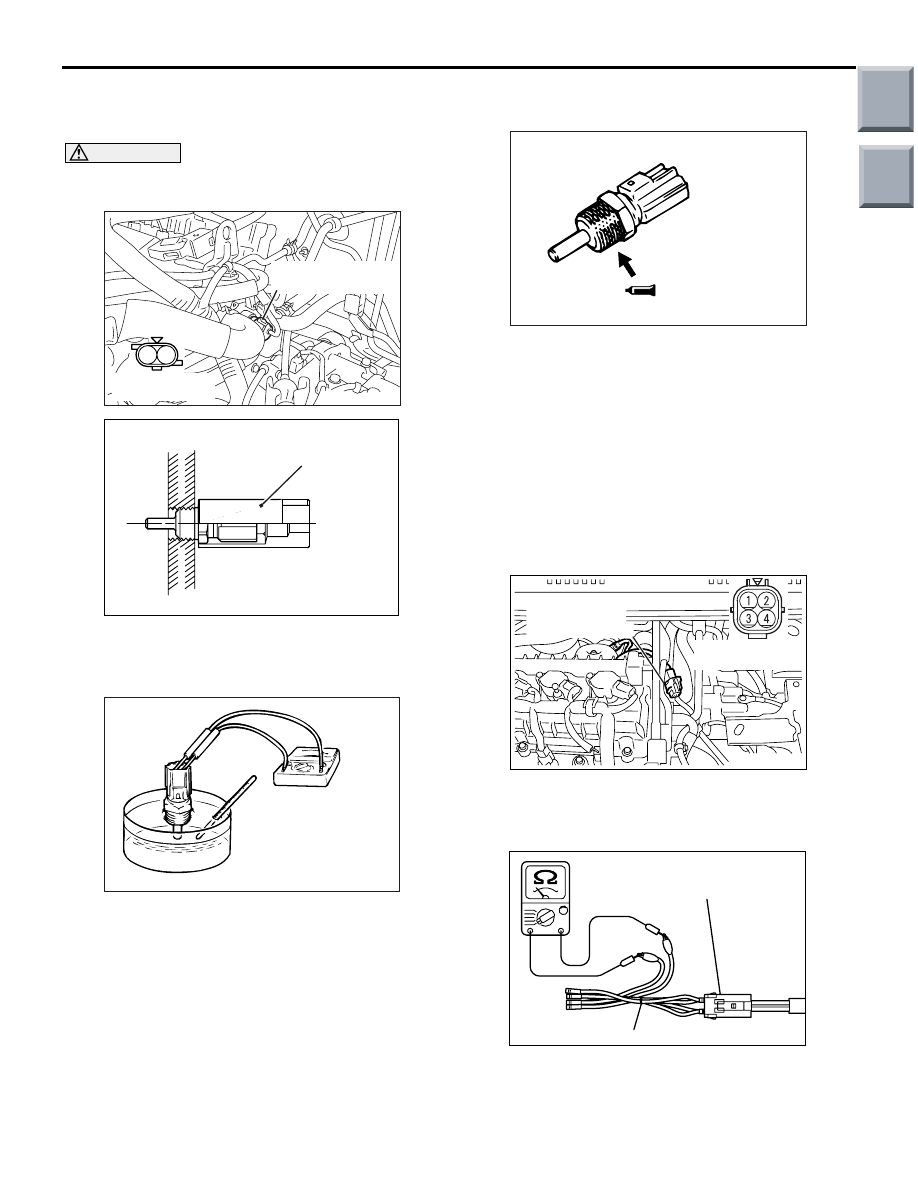Mitsubishi Colt Ralliart. Manual - part 102

ON-VEHICLE SERVICE
MULTIPORT FUEL INJECTION (MPI) <4A9>
13A-362
ENGINE COOLANT TEMPERATURE
SENSOR CHECK
M1131003101156
CAUTION
Be careful not to touch the connector (resin sec-
tion) with the tool when removing and installing.
1. Remove the engine coolant temperature sensor
using coolant temperature sensor wrench, special
tool (MB992042).
2. With temperature sensing portion of engine
coolant temperature sensor immersed in hot
water, check resistance.
Standard value:
14
− 17 kΩ (at −20°C)
5.1
− 6.5 kΩ (at 0°C)
2.1
− 2.7 kΩ (at 20°C)
0.9
− 1.3 kΩ (at 40°C)
0.48
− 0.68 kΩ (at 60°C)
0.26
− 0.36 kΩ (at 80°C)
3. If the resistance deviates from the standard value
greatly, replace the sensor.
4. Apply sealant to threaded portion.
Specified sealant:
LOCTITE 262 or equivalent
5. Tighten the engine coolant temperature sensor to
the specified torque, using coolant temperature
sensor wrench, special tool (MB992042)
Tightening torque: 29
± 10 N⋅m
OXYGEN SENSOR CHECK
M1131005001627
OXYGEN SENSOR (FRONT)
1. Disconnect the oxygen sensor connector and
connect the special tool Test harness (MB991658)
to the connector on the oxygen sensor side.
2. Make sure that there is continuity (5
− 30 Ω at
20
°C) between terminal No. 3 and No. 4 on the
oxygen sensor connector.
AK402201
1 2
Engine coolant
temperature sensor
AC
Equipment side
connector
AK503116 AC
MB992042
AKX01622
AKX01623AD
AK402203
AC
Equipment side
connector
Oxygen sensor
(front) connector
AK101798
MB991658
AG
Oxygen sensor
side connector
Main
Index
Group
TOC